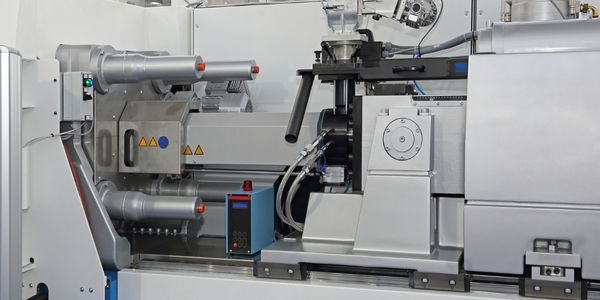下载PDF
How Advantech’s Innovative Solutions Are Advancing Manufacturing in Thailand
技术
- 平台即服务 (PaaS) - 连接平台
适用功能
- 离散制造
- 维护
用例
- 自动化制造系统
- Condition Monitoring
服务
- 系统集成
挑战
在泰国的出口导向型经济中,制造业是经济发展和增长的主要驱动力。然而,全球化为泰国产品在世界各地销售提供了越来越多的机会,同时也加剧了竞争对手之间的激烈竞争。在这个竞争日益激烈的市场环境中,制造商必须利用每一项可用的创新来最大限度地提高生产线的价值和效率。然而,泰国大多数工厂用于安装新设备的空间有限。设施在环境条件和添加新电缆的难易程度方面也存在很大差异。此外,由于利润有限,基础设施投资资金很少,大多数泰国制造商甚至无力更换现有设备。考虑到这些限制,有效的设备监控系统必须足够紧凑和灵活,以便安装在不同的工厂环境中并支持各种机械和设备。
关于客户
IBCON 有限公司是一家自动化系统供应商和系统集成商,致力于帮助泰国制造商克服技术挑战。凭借在泰国工业自动化行业 20 多年的经验,IBCON 在制造业基础设施现代化方面积累了丰富的专业知识。由于大多数泰国制造商仍在进行手动机器监控,IBCON 寻求通过开发能够自动收集数据的设备监控系统来提高管理效率,从而降低维护成本并简化工作流程。
解决方案
研华提供了 WISE-4050 无线 I/O 模块、UNO-2473G 嵌入式自动化计算机和基于 WebAccess/SCADA 浏览器的软件,以提供易于开发、配置和部署的平台解决方案。利用该平台,IBCON 能够快速设计出创新且经济高效的监控系统,该系统可轻松部署在各种工厂环境中。研华的 WebAccess/SCADA 为制造商提供了基于浏览器的软件包,用于监控和数据采集 (SCADA) 操作。WebAccess/SCADA 提供了一个用户友好的基于 HTML5 的仪表板,配备了丰富的库和开发工具,可用于设计独特的动画图形显示、实时数据图表和数据/警报日志报告,还便于进行数据分析,以实现智能管理功能,例如调度控制和趋势分析。
运营影响
相关案例.

Case Study
Plastic Spoons Case study: Injection Moulding
In order to meet customer expectations by supplying a wide variety of packaging units, from 36 to 1000 spoons per package, a new production and packaging line needed to be built. DeSter wanted to achieve higher production capacity, lower cycle time and a high degree of operator friendliness with this new production line.

Case Study
Robot Saves Money and Time for US Custom Molding Company
Injection Technology (Itech) is a custom molder for a variety of clients that require precision plastic parts for such products as electric meter covers, dental appliance cases and spools. With 95 employees operating 23 molding machines in a 30,000 square foot plant, Itech wanted to reduce man hours and increase efficiency.

Case Study
Fully Automated Visual Inspection System
Tofflon has developed a fully automatic machine that uses light to inspect vials, medicine bottles, or infusion containers for glass fragments, aluminum particles, rubber grains, hairs, fibers, or other contaminants. It also detects damaged containers with cracks or inclusions (microscopic imperfections), automatically removing faulty or contaminated products. In order to cover all production processes for freeze-dried pharmaceuticals, Tofflon needed to create an open, consistent, and module-based automation concept.

Case Study
SAP Leonardo Enabling Rocket Science
At times, ULA has as many as 15 different operating systems dedicated to overlapping processes, such as rocket design, testing, and launch. Multiple systems created unnecessary costs and unwanted confusion among workers at offices, factories, and launch sites in different location. In order to improve collaboration and transparency during vital activities that directly influence mission success, ULA wanted to improve data sharing and streamline manufacturing processes.

Case Study
IIC Smart Manufacturing Connectivity for Brown-field Sensors
The discrete manufacturing domain is characterized by a strictly hierarchical structure of the automation systems, commonly referred to as the automation pyramid. Data acquired by a sensor typically flows through an IO-module into a Programmable Logic Controller (PLC) which manages the local real-time control system. As all process data are concentrated in the PLC, re-programming the PLC and thus, implementing interfaces to access these data appear to be the natural choice to transfer them to the IT system. However, for brownfield installations this choice has proven impracticable for the following two reasons:In brownfield facilities, PLC usually operate within a once-specified environment and are rarely re-programmed. That is why the active staff is often not familiar with the code and lacks of the competence to modify the existing implementation in a reasonable amount of time.Furthermore, for cost reasons, any PLC was selected to exactly match the requirements of the environment within which it was intended to operate. That is why it cannot be assumed that a PLC will be able to support additional tasks such as communicating data through additional interfaces.

Case Study
Human–Robot Control
Industry 4.0 is changing the way manufacturing industry operates. Increasingly more manufacturers are leveraging advanced technologies such as robotics and automation systems to improve productivity and efficiency. As a result, human–machine interfaces (HMIs) are becoming more important in their role in the digital connectedness of humans and machines. However, using the wrong HMI can lengthen development times and increase implementation costs.





